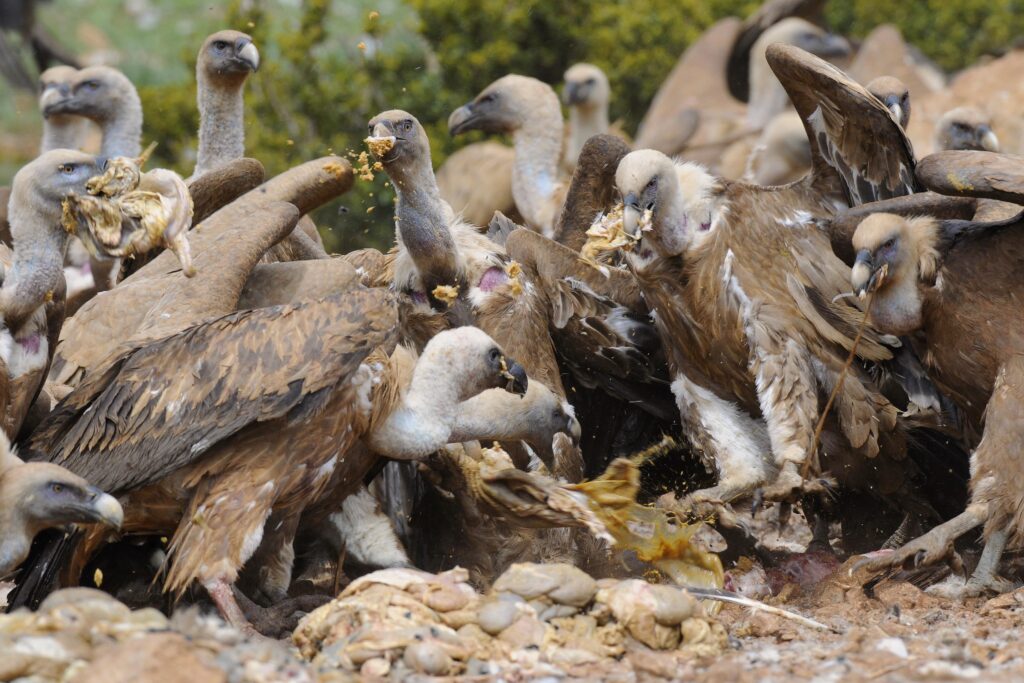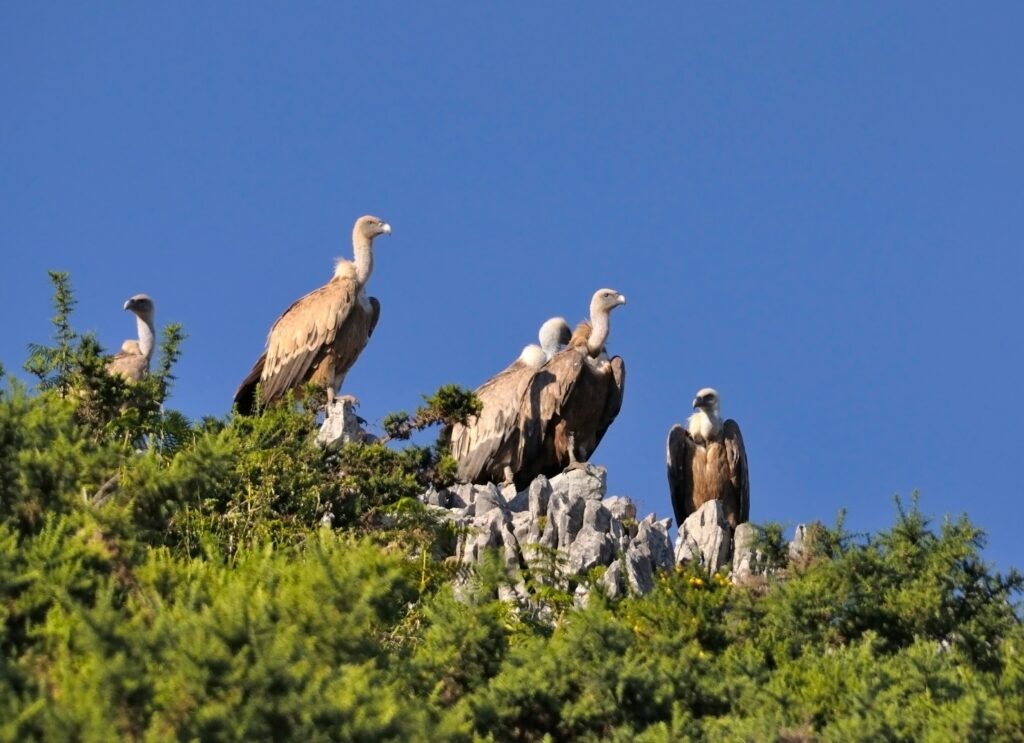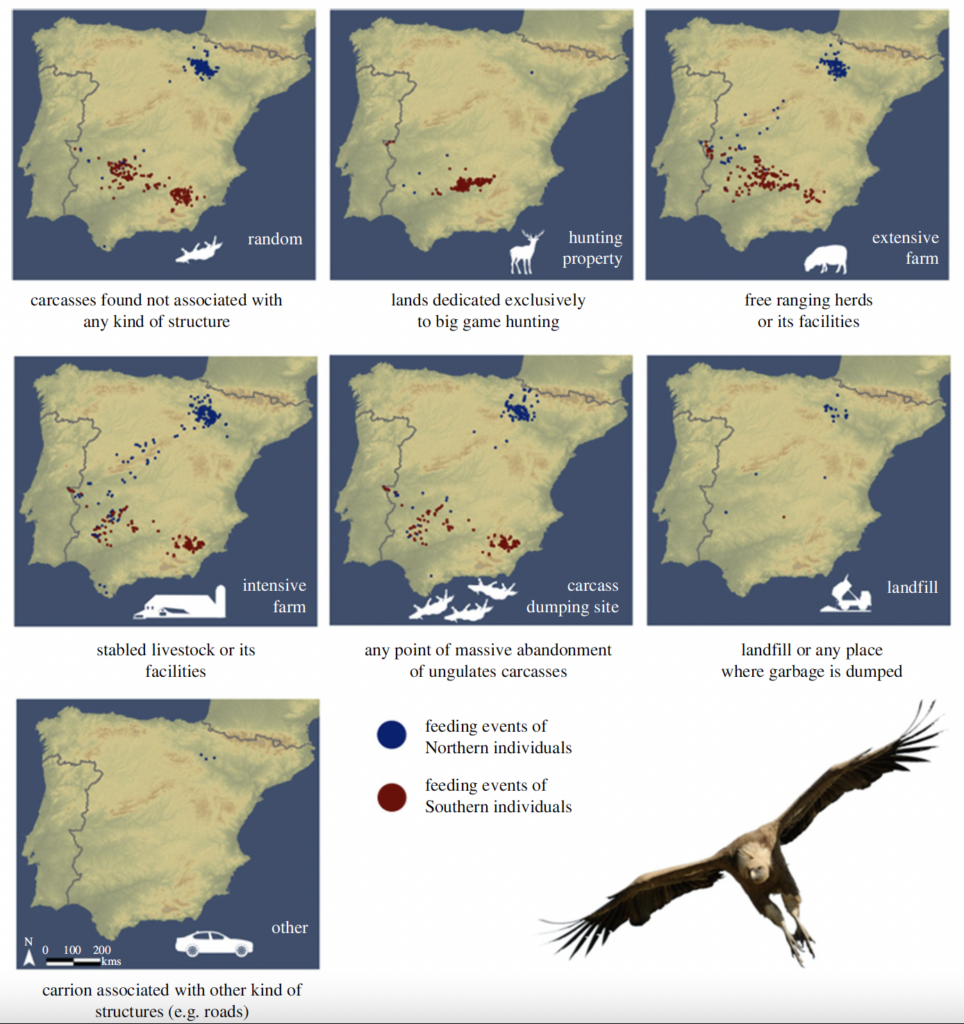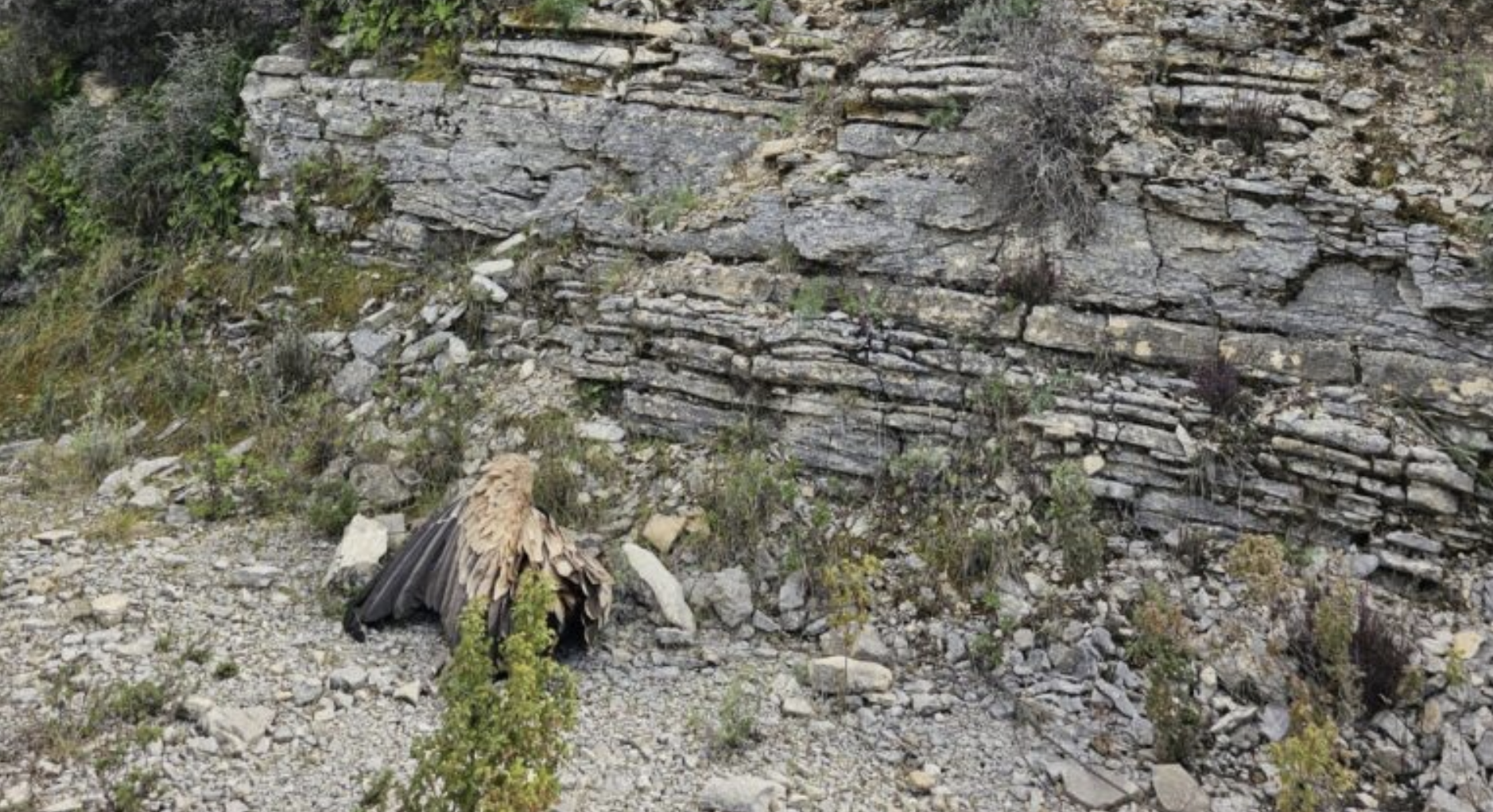As obligate scavengers, vultures are generally considered “carrion eaters” with homogeneous diets and no intra-specific diet variation. However, a recently published study carried out by a team of Spanish researchers sheds light on how vulture culture (transmissible cultural traits) within a population influences the dietary variation of Griffon Vultures (Gyps fulvus).

Study reveals how vulture culture influences individual dietary variation
Diet can change at the individual level and is an essential component of natural selection in wild populations that may influence the individual’s vulnerability to natural and anthropogenic hazards. Dietary specialisation can influence individual fitness and enhance reproductive isolation between individuals of the same population. Both external factors, such as food availability, energetic content or predictability, and internal factors influence dietary variation. For example, inter and intra-specific competition may force more subordinate or inexperienced individuals to consume suboptimal prey, increasing inter-individual variation in diet composition at the population level.
Authors mention that other intrinsic factors, such as body size, sex, social status or risk perception (against predators or parasitic risks on food), may also determine dietary choices. During the juvenile phase, young individuals may develop a preference for a particular area or resource by imitating their parents or other experienced individuals. These processes contribute to generating cultural patterns visible at the population level.
Griffon Vulture, the most social of Europe’s vulture species
The Griffon Vulture (Gyps fulvus) is a very social species, roosting and breeding in large-scale colonies that can host hundreds of individuals. Carrion of domestic and wild ungulates make up most of their diet preferences, with the occasional inclusion of smaller-sized vertebrates. As obligate scavengers, they have specialised in finding resources that require low levels of manipulation. They developed highly efficient flying and foraging strategies, enabling them to roam vast areas, sometimes far from their home range. While foraging, they rely heavily on the social information obtained from their conspecifics, enhancing the chances of studying how cultural traits affect individual dietary choices in this species.
The authors studied individuals’ preferences of Griffon Vultures foraging over vast areas across their home range. One of the main objectives of this study was to understand if individuals sharing the same foraging area would converge in terms of food choice or if they would retain the dietary preferences of their population of origin. To analyse individual dietary variations, authors followed the movements of two Spanish populations, one from Northern Spain and the other from Southern Spain, that partially overlap in their foraging area. They have analysed the type of resource consumed and mapped specific sites where they feed at a large spatial scale.


Analysing individual vulture dietary preferences of two Spanish Griffon Vulture populations
Researchers combined GPS tracking and accelerometers with fieldwork to investigate individual dietary variation in 55 Griffon Vultures. One group of birds from Southern Spain (26 individuals) inhabited a mountainous region, with Mediterranean woodlands and pastureland used for extensive livestock production. Whilst the Northern Spain group (29 individuals) was surrounded by mid-size mountains that are more anthropised, where intensive agriculture and livestock practices prevail. Resources are abundant in both areas, and both groups overlapped in southwestern Spain, where domestics and wild ungulates are also abundant.
The authors found a high similarity in birds’ diets from the same population, while birds from different populations differed in their selection of carcasses and feeding sites. Individuals from the northern highly modified ecosystem consumed more anthropic resources (e.g. stabled livestock or rubbish), resulting in more homogeneous diets. By contrast, individuals from the wilder colonies located in Southern Spain consumed more unpredictable resources, such as wild ungulates, and had a higher level of diet variability at the population scale.
In addition, vultures from the southern population used a greater variety of feeding sites, mainly hunting properties (26,6% feeding events) and intensive farms (24%). The northern group frequently used anthropic and predictable resources, such as carcass-dumping sites (36,3%), intensive farms (34,6%) and landfills (10,7%).




Feeding sites visited (1) and food consumed by the different groups (2 and 3), based on Arrondo et al. 2023
Cultural traits may influence individual dietary variations
Finally, individuals tended to appear closer to others from their population in shared foraging areas. This result supports the potential role of social learning in influencing the trophic niche of Griffon Vultures. Transmission of cultural traits might be facilitated by the high cognitive capacity of vultures and their complex social behaviours.
“The diet of vultures within the shared foraging area differed significantly according to their population of provenance (for feeding site) suggesting that individual vulture diets are mostly driven by learnt cultural traits.”
Arrondo et al. 2023
Authors also suggest that sex might be influencing the observed patterns, with “males being more likely to consume predictable resources than females”. As foraging on predictable resources in anthropised landscapes is associated with higher mortality risks (e.g. poisoning, higher exposure to pharmaceuticals, collision with powerlines), this behaviour could result in higher mortality of males, potentially impacting population dynamics. Further research is needed to assess the long-term effects of intra-and inter-population variation in diet composition.
Individual dietary variation may affect a vulture’s fitness and ability to cope with unpredicted changes. Authors suggest that the increasing homogenisation of carrion resources – towards more anthropic and predictable sources – can lead to important changes in cultural traits and disruptions of feeding-related evolutionary processes, advocating for wider areas of natural landscapes and extensive livestock production for the provisioning of safer food sources for vultures.
Source: Arrondo E, Sebastián-González E, Moleón M, Morales-Reyes Z, María Gil-Sánchez J, Cortés-Avizanda A, Ceballos O, Donázar JA, Sánchez-Zapata JA. 2023 Vulture culture: dietary specialisation of an obligate scavenger. Proc. R. Soc. B 290: 20221951. https://doi.org/10.1098/rspb.2022.1951



